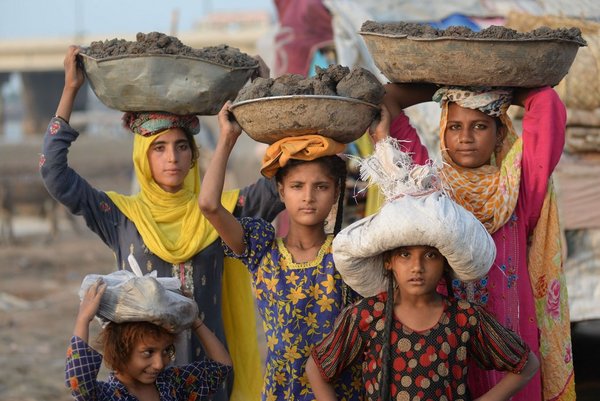 Read this article in French
Read this article in French- Share this article
- Subscribe to our newsletter
Optimism over the elimination of child labour
Since 2000, the International Labour Organization (ILO) has been monitoring child labour. The eradication of all child labour by 2025 was adopted as Target 8.7 in the UN Agenda 2030. In the hearing, the ILO Director responsible for the topic of child labour, Benjamin Smith, reported success that had been achieved. By 2016, labour performed by children between the ages of 5 and 17 years had fallen from 245 to 160 million. But then the process stalled. In fact, four million more children have entered child labour during the Corona pandemic. By the end of 2021, 168.9 million children will be working instead of going to school. And 79 million of them are doing dangerous work, for example in mines.
Despite stagnation and even an increase in the pandemic, Smith was optimistic about reversing the trend and getting around 15 million children out of labour by the end of 2022. Referring to the first 16 years of data recording, he said: “We do know how it works.” In Asia and South America, the positive trend continued up to 2020. The increase in child labour is accounted for almost exclusively by Africa south of the Sahara, where, since 2012, numbers rose to 86 million by 2020, constituting half of all child labour. World-wide, 70 per cent of all child workers are employed in agriculture.
A task for society as a whole
Child labour will not be eliminated without considering agriculture, stresses Adama Yaya Diarra, who coordinates the CLEAR Cotton project at the UN Food and Agriculture Organization (FAO). Children often perform “invisible” work such as guiding animals to the watering place. Higher commodity prices, sufficient food, diversification, a social network of health insurance and pensions as well as an environment with school education are helpful in countering child labour.
In 2012, Côte d’Ivoire established a legal framework against child labour with the key pillars of prevention, protection of victims and sanctions. With a budget the equivalent of 156 million euros, the third National Action Plan was running up to 2023, said Adama Kamara, Minister of Employment and Social Protection. Kamara stated that the prevalence of child labour had been reduced by eight per cent, and in the cocoa sector even by 16 per cent. The Action Plan was being implemented in ten out of 105 “Departements”, or districts. A greater expansion of the scheme would require more staff as well as cross-departmental collaboration. Certification stating “Without Child Labour” would be helpful, the Minister pointed out.
The neighbouring country of Ghana is also working with National Action Plans, as Head of Child Labour Unit Elizabeth Akanbombire at the Ministry of Employment and Labour Relations explained. Ghana was planning Child Labour-Free Zones in urban and rural districts and was training staff to detect child labour.
Taking local action
“Only informed farmers take action,” said Patrick Owusu of the cocoa cooperative Asunafo in Ghana. Since 2008, more than 9,000 farmers have joined the cooperative, which has built schools and provided teaching material for the classrooms. “Mediators” visit the schools three times a year and help smallholder families to become integrated in the newly established health monitoring system. In keeping with local traditions, children are allowed to help their families on the farms without crossing the threshold to labour. The cooperative has trained more than 1,600 women and youths for services such as tree pruning. Against a fee, farmers can commission them in order not to have their own children do the work.
Theodorah Nabukalu of the NGO Global March against child labor from Uganda often has to perform grassroots activities at local level, for most farmers are unaware of children’s rights and the ILO conventions against child labour.
Roland Krieg, journalist, Berlin Germany
More information:
ILO platform on child labour
CLEAR Cotton project of the ILO, the EU and the FAO
Global March Against Child Labour (Global March)





Add a comment
Be the First to Comment